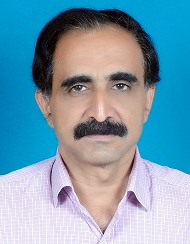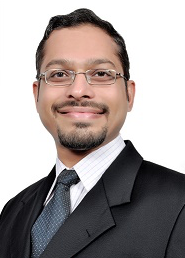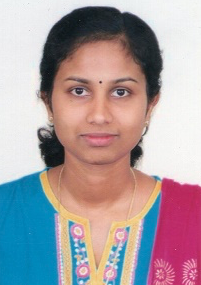Happiest Minds is a next-generation digital transformation, infrastructure, security and product engineering services company, with 100+ customers and 1600+ people, spread across 16 locations. Happiest Minds’ philosophy is simple – ‘Happiest People make Happiest Customers’.
In this interview for the Design in India series, Babu K C, General Manager and Head, Hardware Practice, Kiran Veigas, Associate Director, Corporate Strategy and Marketing, and Divya Sasidharan, Engineering Manager, from Happiest Minds, talk to Dilin Anand and Priya Ravindran of EFY.

Q: Could you introduce us to Happiest Minds?
A: Happiest Minds is the youngest information technology (IT) services company in India. Havingstarted about four years ago, today we have 1600+ people catering to more than a 100 clients. Our geographical focus areas are the United States (US), Europe and India, in that order. Like the company name suggests, our vision is to keep the employees and customers the happiest.
Q: What is your unique selling proposition (USP)?
A: Hardware practice at Happiest Minds works on all the phases of a product design from concept to production. Given the high-level requirements of the product, we work with the customer to understand their needs and arrive at the specification document, after weighing the viable alternatives. Once the specifications are approved, we go about the product drill, from design to testing and certification, till the product is ready for manufacturing. Having the capability to offer a turn-key product solution, involving hardware, field-programmable gate array (FPGA), firmware, mechanical design and application software is our unique selling proposition.

Q: What are the niche technologies you work on?
A: Our main focus has always been disruptive technologies. About 85 to 95 per cent of our work
revolves around this and that is how we bring about a paradigm shift in the way we think and the way we execute. Next-gen technologies like big data and analytics, cloud, mobility, middlewareare all part of this package.
Q: Your speciality is disruptive technologies. Do you have a separate team for this?
A: Our three business units are Digital Transformation & Enterprise Solutions, Infrastructure Management & Security Services and Product Engineering Services.
Digital Transformation group enables organisations to make a tangible impact in areas like customer experience, business efficiency and business innovation, by taking a disruptive approach in building platforms, integration, processes and insights.

Infrastructure Management and Security Services group helps organisations to improve agility, flexibility, security and interoperability of the enterprise infrastructure for next generation digital transformation.
Product Engineering Services is focused on four specific domains. They are the Enterprise Domain that caters to enterprise independent software vendor (ISV) customers, Customer Platforms focusing on e-commerce, media and entertainment, Internet of Things (IoT) focusing on industrial, automotive and building automation, and Data Center Technologies (DCT) focusing on software-defined networking and data centres.
Q: Could you take us through the post-production support you offer?
A: Post-production support becomes very important as there could be changes coming in at the component level or even from the customisation front, after design closure. Over the last few years, post-production support has become a lot easier with the fabrication house also experiencing a variety of designs. Today, it is not always required that the engineer has to personally go and interact with the fabrication house; a lot of it can be done remotely.
Q: How would you go about telling your clients what you do?
A: We go by experience. Having worked in this field for about four years now, we have loyal customers who come back to us for their next product. They also spread the word, and the references increase our customer pool. Also, with the slowly increasing trend of research and development teams facing the media, thought leadership at events and technical publications, the ‘getting-to-know’ part is becoming a lot easier.
Q: Tell us about a few of your projects.
A: We have done several processor board designs in the past, mostly based on Intel/ARM processors. Recently, we designed an ARM-based storage server that was quite interesting and challenging too. The interesting part was that it was powered using a 64-bit octa-core ARM processor, a new entrant to the server family. This is a multi-processor system that uses peripheral component interconnect express (PCIe) Gen 3 technology for interconnections to numerous boards. Currently, we are designing a similar system based on Intel Xeon and Atom processors for micro-server applications, which uses high-speed technologies such as PCIe Gen3 and double data rate fourth generation (DDR4) memory modules.
Q: Could you tell us about your work in the industrial domain?
A: Another interesting area is industrial automation and control. We are presently working on one such system for controlling heavy machinery. The system will have precision sensors that sense target parameters like position, velocity, direction and temperature, which are then compared with pre-set values. In the case of a deviation from the desired outcome, the system has to take corrective actions like varying the speed or updating the position of the tool. The precision and timing required to realise such a system is utmost challenging as everything has to happen in real-time, not forgetting the fact that it has analogue, digital and high-voltage signals, all running on the same board. So, the choice of the processor becomes extremely critical. To guarantee real-time performance, we are using field-programmable gate array (FPGA) for some of the critical paths such as proportional integral derivative (PID) loops, high-speed counter interface and analog-to-digital converter/digital-to-analog converter (ADC/DAC) interfaces.
We have also worked on other single board computers (SBCs) targeting industrial applications based on high-end Intel processors. We are looking forward to working on more such challenging projects from the industrial domain.
Q: What about your interests in the test and measurement (T&M) sector?
A: We have been working on an array of T&M boards dealing with high-speed interfaces like serial-attached small computer system interface (serial-attached SCSI), PCIe Gen4, serial advanced technology attachment express (SATAe), universal serial bus (USB) 3.0, DDR4 and a variety of form factors ranging from small form factor(SFF)-based storage devices to small-outline dual-in-line memory module (SODIMM), unregistered dual-in-line memories (UDIMMs) and a few custom form factors targeting specific end-customers. These boards tap high-speed signals from live systems-under-test and are expected to induce minimal noise into those systems. The main challenge here is the speeds at which these interfaces work and the kind of signal integrity (SI) that has to be achieved. During design, these boards are run through multiple levels of SI simulations to ensure that the highest level of signal quality is achieved. In many cases, the high-speed traces are exposed, so as to have minimal propagation delay through the printed circuit board (PCB). Sharp bends are not allowed on these traces, and instead, arcs or curves are used. Back-drilling technique is used to make sure that the stub length on these traces is a bare minimum. In short, the layout of these boards demands the most stringent constraints.
Q: From a PCB perspective, what are the factors that determine signal integrity?
A: The choice of materials used to fabricate the PCB and even the type and quantity of solder used to assemble the components can create an impact on the signal quality and these are very carefully selected.
Q: Talking about boards for T&M equipment, how do you go about testing those boards?
A: Simulation rules the roost here to arrive at the best design. First, a golden board is arrived at, which behaves exactly the way we want it to. All other boards are then tested against this board.
Q: Tell us what you do in the IoT arena.
A: We have a separate practice for IoT projects. We are already developing new IoT products and also adding connectivity to existing products for our customers. We do all the building blocks for IoT including the hardware, firmware, mechanical enclosure, cloud interface and complete product compliance certifications, and deliver ready-to-manufacture designs.
Q: What is the most exciting IoT project you have worked on?
A: We worked on a lighting control solution project recently. Instead of walking to the switchboard and manually turning on/off lights, you operate it via a mobile phone. You can also access your lights remotely from anywhere in the world, as long as the devices are connected.
Q: How do you see the growth of independent design houses (IDHs) in India?
A: India-based product design houses have a good future. There is a lot of untapped potential for services companies offering hardware/firmware design services. There are several players in this field already, but there is space available for more. India is traditionally known for software outsourcing, but our hardware or complete product design capabilities are not well-known as it is not marketed well like the software. I think people should come forward and start new ventures to offer product design services for India, as well as for global clients. There are challenges like lack of component industry in India, complicated customs rules and related delays in importing parts, but these can be solved with appropriate help from the government.







